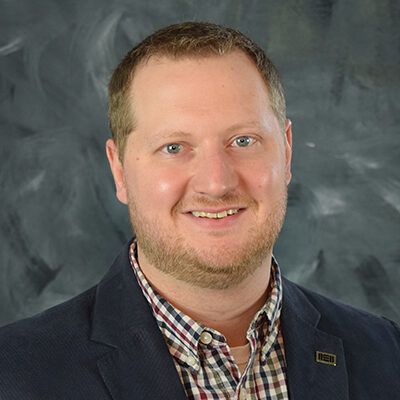January 24, 2024
Renewable Diesel Boom & Where Biofuels Are Headed
Host Brady Brewer discussed the “boom” in renewable diesel and its expected impact on the soybean market with Dr. Scott Irwin, a professor of agricultural economics at the University of Illinois, on the latest episode of the Purdue Commercial AgCast. In addition to discussing the renewable diesel market, Dr. Irwin also provides insight into the sustainable aviation fuel (SAF) market and potential impacts on U.S. agriculture. Tune in to hear Brady and Scott discuss how the future might play out in these two important markets for U.S. agriculture.
This episode is a recap of Dr. Scott Irwin’s presentation at the 2024 Purdue Top Farmer Conference. Scott is the author of “Back To The Futures”, a memoir of growing up on a family farm in Iowa and a market primer on commodity futures markets, which Scott has studied extensively over the course of his career, an academic career that is now in its 5th decade. Dr. Irwin is a globally recognized thought leader in agricultural economics and is one of the nation’s foremost researchers focused on the impact of biofuels on commodity markets.
The audio transcript can be found below. Find out more on the Purdue Top Farmer Conference by visiting the program page.
Audio Transcript:
Brady Brewer: Hi, and welcome to the Purdue Commercial AgCast, the Purdue University Center for Commercial Agriculture’s podcast featuring farm management news and information. I’m Brady Brewer and joining me today is Dr. Scott Irwin, who is a professor of agricultural economics at University of Illinois.
Before we get into the topic, I just want to remind all the listeners. You can find the podcast on the Center for Commercial Agriculture’s website at purdue.edu/commercialag or any of your major podcast providers. Today’s topic is a follow up from the 2024 Top Farmer Conference where Dr. Irwin was a speaker on the renewable diesel outlook.
Welcome Dr. Irwin. What’s the main points that you just talked about here at the 2024 Top Farmer Conference as it relates to the renewable diesel markets.
Scott Irwin: Well, there’s been a boom, Brady, in the building of renewable diesel plants and consumption has been exploding. And so my talk was about, documenting the dimensions of the renewable diesel boom, what’s driving it, what’s behind it, and then where it might be going.
Brady Brewer: There was a lot of talk, and you got a lot of questions around several key points in there, so let’s talk about some of those. So the first one, what’s going on with sustainable aviation fuel from the renewable diesel market?
Scott Irwin: Well, sustainable aviation fuel can be made, um, and by a modified version of a renewable diesel plant. Basically add some more technology and you can make sustainable aviation fuel. There’s a lot of interest in that because the aviation fuel market in the U.S. is very large, about 25 billion gallons. And there’s no other easy way to decarbonize it except through biofuels in the form of sustainable aviation fuel, and some big incentives for the production and investment in sustainable aviation fuels was included in last year’s IRA law that was passed.
It’s also a lot of interest because you can make SAF not only from the vegetable oil pathway through renewable diesel, it’s at least theoretically possible to make it out of ethanol. So there’s that angle of why there’s so much interest in that topic.
Brady Brewer: Now, has this market taken off yet? I remember you distinctly saying that we haven’t really done the aviation fuel at scale yet. So is this technology just in its infancy, or is there a long ways to go to see how much this market is going to develop?
Scott Irwin: There’s a long ways to go to see how this market will develop. There is some sustainable aviation fuel being produced using what I call the renewable diesel pathway. But it’s very, very small. We’re talking about less than 20 million gallons out of a total market size of 25 billion gallons. So as I like to say, the SAF market hasn’t even really reached the starting gate yet, let alone launched very far.
So that’s an industry and production process that’s very much in its infancy and still to be determined how viable it’s going to be in the long run.
Brady Brewer: Sounds like there’s a lot of unknowns of what this market will look like here in the coming future.
Scott Irwin: Exactly.
Brady Brewer: The other point that you got a lot of questions on was that around carbon sequestration. So me about how carbon sequestration plays into this market.
Scott Irwin: That is mainly coming out of the corn ethanol industry. It’s not really well known, but ethanol plants produce a huge amount of CO2. The fermentation process used to make ethanol basically produces pound for pound equal amounts of ethanol and CO2. So there’s huge amounts of it, and it’s the major hold up in terms of corn ethanol becoming an advanced low carbon fuel. You’ve got to not release it into the atmosphere, you have to bury it in the ground. And it makes a huge difference in whether it’s just a conventional biofuel or an advanced biofuel. And to qualify for all these new programs for sustainable aviation fuel, going through with the corn ethanol pathway, it will have to meet the standard for being an advanced biofuel.
Brady Brewer: So is the technology there right now for it to be this advanced biofuel or is that still to be determined?
Scott Irwin: It’s in what’s called the pilot stage. Pilot plants are being built. It has not yet been produced at industrial scale. So, uh, again, to be determined of whether that technology will truly, in the long run, ever be commercially sustainable. Everything I read suggests that eventually it will be, but it’s going to take quite a bit of time.
Brady Brewer: You gave two scenarios, a bearish scenario on this market and a bullish scenario. Walk the listeners through a quick synopsis of how each scenario would play out for this market.
Scott Irwin: For just the renewable diesel market. Basically, the bearish scenario is built upon analysis I’ve done showing that the U.S. Renewable Fuel Standard sets the total size of the market for renewable diesel, and we have rapidly built capacity past that demand. So, inevitably, in a supply overhang situation, the price of renewable diesel and production profits will have to suffer. That’s the bearish scenario. And we’ve got several really large renewable diesel refineries opening up in 2024 that will compound our oversupply problems in the short run.
The bullish scenario really relies on what’s happening in Canada. It’s a very interesting situation. Canada has started a low carbon fuel program that’s identical to what has been in California. And as they implement that program, there’s the potential for a lot of renewable diesel to flow north into Canada like it has been flowing into California to satisfy the California LCFS program. But how fast Canada is ramping up that program? I just haven’t dug into those details quite yet. But that’s a real wild card to look in kind of the two to five year framework for renewable diesel. There’s potential basically for Canada to soak up the excess supply relative to the domestic U.S. market for renewable diesel if everything goes well.
Brady Brewer: Before we close Dr. Irwin, I do want to ask you one of the items that you brought here to the 2024 Top Farmer Conference was your book called “Back to The Futures”. If anyone wants to purchase this book you can buy it on Amazon. Search Back to the Futures by Scott Irwin, and it’s available in paperback, hardcover, ebook, and audiobook, as well. Tell us a little bit about your book.
Scott Irwin: Well thank you for asking Brady. It was definitely a labor of love. You know, I’ve been out in academics a lot of decades, and I wanted to do something different. I wanted to write something not for an academic audience, but something for a broad, general audience that was a fun and entertaining way to help educate people about something that’s been my life’s focus professionally, the commodity futures markets. And so I got the idea of combining wild and crazy stories, particularly growing up on a farm in Iowa, as a way to make the topics interesting. And, then teach about various topics in the markets, and that’s what it is.
Brady Brewer: That’s awesome. So you intermingle your life stories growing up on a farm in Iowa and then use that to transition into lessons about the ag commodity markets.
Scott Irwin: Yes, that’s exactly, as your old department head, Jason Lusk, said about the book. He said it’s a half memoir and half primer on the, commodity futures markets. But the stories, as funny as they are, do serve a purpose. I like to call them market parables. They’re all there to illustrate in parable fashion the topic that I’m going to be teaching about and discussing in the rest of each chapter.
Brady Brewer: So if anyone is wanting a fun yet informative book to learn about the commodity markets here in agriculture, pick up a copy of “Back to the Futures”; by Dr. Scott Irwin.
I just want to remind all of our listeners for more farm management news and economic information, visit us at the Purdue Center for Commercial Agriculture’s website at purdue.edu/commercialag. You can also find us on Twitter with the handle @PUCommercialAg. And for more information from Dr. Scott Irwin, you can go to his website at scotthirwin. com. On behalf of the Center for Commercial Agriculture here at Purdue University, we thank you for listening.
TAGS:
TEAM LINKS:
RELATED RESOURCES
Margaret Lippsmeyer presented during agri benchmark’s 2024 annual conference in mid June, which was hosted by the Spanish Ministry of Agriculture in Valladolid, Spain. An increase in soybean acreage may come from either (a) shifting away from continuous corn rotations to corn-soy and (b) shifting corn-soy rotations toward corn-soy-soy. Based on agri benchmark data, Margaret showed that option (a) would require an increase in soybean prices of 6% and option (b) of 8% to make these rotations preferable over existing ones.
READ MOREUPCOMING EVENTS
December 1 & 8, 2025
Join Purdue Extension for a two-part workshop designed to help you gain a clearer understanding of tax planning essentials. The first session on December 1 will focus on the fundamentals of farm taxes, with particular emphasis on strategies that can be used in a low net income year. The second session on December 8 will focus on key tax strategies and will allow plenty of time for questions. Registration cost is only $20.
Read MoreDecember 15, 2025
This program provides in-depth coverage of agricultural and farm tax issues. In addition to covering timely tax issues, we will cover disaster tax issues, depreciation and expensing farm assets, retirement planning for farms, and tax planning in low-income years. This year’s webinar will be co-taught by a team from Ohio State and Purdue Universities.
Read MoreJanuary 27 or 28, 2026
Farm Shield is more than a conference, it’s a commitment to helping agricultural families build resilience and plan for a secure future. Don’t miss this opportunity to protect your legacy!
Read More
